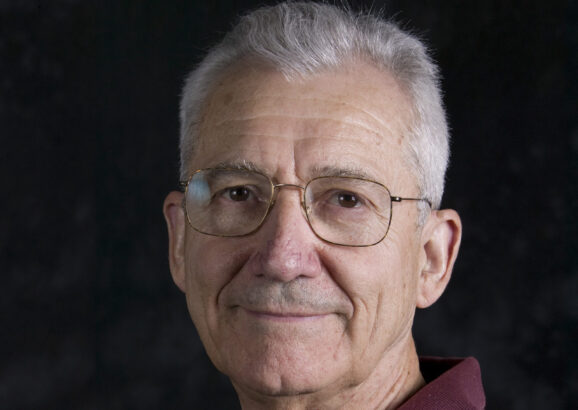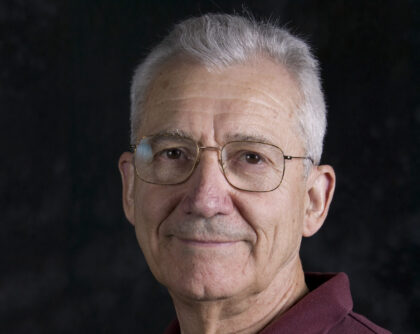Wit Busza
Research Interests
Professor Busza is an experimental particle physicist who concentrates on the study of multiparticle production in pp, pA and AA collisions at high energies. The aim being to get a better understanding of the mechanisms involved in the production of particles in such collisions, and of matter that exists at extremes of temperature and energy density.The energy densities and temperatures currently accessible to us in laboratory experiments are similar to those in our universe at about a microsecond after the Big Bang. At that time the hadronic part of the universe was a dense collection of quarks and gluons in a phase called a Quark-Gluon Plasma (QGP), which expanded, cooled and evolved into protons, neutrons, pions etc. Understanding of how a structureless gas of weakly interacting quarks and gluons evolves into the QGP and then into ordinary highly complexed matter, is Busza’s primary research interest. Busza is best known for his pioneering studies of multiparticle production in hadron-nucleus collisions, for the discovery of participant scaling (sometimes known as nu bar scaling or wounded nucleon scaling) and for initiating and leading the PHOBOS research program at BNL’s Relativistic Heavy Ion Collider (RHIC). He is credited for the discovery (concurrently with others) of the phenomenon known as extended longitudinal scaling and, before the construction of RHIC, together with Alfred Goldhaber, for the experimental data-based estimate of the energy density that will be achieved at RHIC.
Biographic Sketch
Professor Wit Busza is of Polish origin, was born in Rumania at the outset of World War II and spent the first years of his life as a refugee in Rumania, Cyprus, Palestine and England. He obtained the B.Sc. (1960) and Ph.D. (1964) degrees from University College London (the PhD in Professor Franz Heymann’s group). In 1966 he emigrated to the US to a postdoc position in Professor Burton Richter’s group at the Stanford Linear Accelerator Center. In 1969 he joined the MIT faculty, becoming a full Professor in 1979 and Friedman Professor of Physics in 1997. In the1970’s Busza originated/co-originated the E178, E451, E565 and E665 experimental programs at Fermilab. These are various studies of particle production in hadron-nucleus and muon-nucleus collisions. In the 1990’s/2000’s he originated and led PHOBOS, one of four detectors/programs built to search for and study the Quark-Gluon Plasma in collisions of nuclei, accelerated by RHIC, at Brookhaven National Laboratory. In the 1980’s he participated in the SLD program at the Stanford Linear Accelerator Center and, recently, in the CMS program at the Large Hadron Collider at CERN. From 1991 until his retirement in 2012, he was the leader of the Relativistic Heavy Ion Group at MIT.

Awards & Honors
- 2015 // Honored with a Special Issue of Annals of Physics
- 2014 // The Fifth Berkeley School on Collective Dynamics in Heavy Ion Collisions held in honor of Wit Busza
- 2012 // Buechner Prize for Outstanding Contributions to Mentoring of Undergraduates in the Department of Physics (MIT)
- 1998 // Foreign Member, Polish Academy of Arts and Sciences
- 1997 // Francis L. Friedman Chair in Physics (MIT)
- 1995-05 // Margaret MacVicar Faculty Fellow, MIT (Honors MIT's Best Teachers)
- 1992 // MIT School of Science Prize for Excellence in Undergraduate Teaching
- 1990 // Buechner Prize for Outstanding Contributions to the Education in the Department of Physics (MIT)
- 1989 // American Physical Society Fellow (Nominated by DPF) "For pioneering the use of nuclear targets for the study of the mechanisms of particle productions at high energies, in particular the space-time evolution of the production process."
Key Publications
-
-
Heavy Ion Collisions: The Big Picture, and the Big Questions, Wit Busza, Krishna Rajagopal, Wilke van der Schee
Ann.Rev.Nucl.Part.Sci. 68 (2018) 339-376 • e-Print: 1802.04801 [hep-ph] -
Extended Longitudinal Scaling: Direct evidence of saturation, Nucl. Phys. A854 (2011) 57.
-
The PHOBOS Perspective on Discoveries at RHIC (discovery, with other RHIC experiments, that the medium produced in AA collisions behaves as an almost perfect liquid); B.Back, et al. (PHOBOS) Nucl.Phys.A757:28-101,2005.
-
Projectile Dependence of Multi Particle Production in Hadron-Nucleus Interactions at 100GeV/c (discovery of participant scaling); J.E. Elias et al. (Fermilab E178 collaboration) Phys.Rev.Lett 41, 285, 1978.
